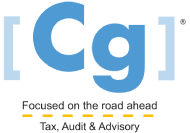
In Notice 2021-48, the IRS recently provided guidance on changes made under the American Rescue Plan Act (ARPA) to the funding rules for single-employer defined benefit pension plans. The guidance also addresses the funding-based limits on benefits. Here are some key details.
Minimum funding standard
Generally, sponsors of single-employer defined benefit plans must satisfy the minimum funding standard applicable to the plan for any plan year. This minimum funding standard is satisfied when a plan sponsor’s contributions for the plan year are at least equal to the minimum required contribution determined under the Internal Revenue Code.
The tax code establishes that the minimum required contribution for the plan year is the sum of the:
- Target normal cost of the plan,
- Shortfall amortization charge (if any) for the plan, and
- Waiver amortization charge (if any) for the plan.
A plan must establish a shortfall amortization base for a plan year with asset values less than the amount of the plan’s funding target and amortize that base over seven years.
Election option
The ARPA changed the amortization period for funding shortfalls to 15 years instead of seven. A single-employer plan may elect to have the 15-year amortization of funding shortfalls apply to a plan year that starts before January 1, 2022.
This election is made by providing written notification of the election to both the plan’s enrolled actuary and the plan administrator. The election must include specified information and the plan sponsor needs to sign and date it. A plan sponsor may also elect to reduce its minimum required contribution by maintaining a prefunding balance or a funding standard carryover balance.
ARP segment rates
The tax code provides limits on benefits and benefit accruals under a single-employer defined benefit pension plan. These limits are applied based on the plan’s adjusted funding target attainment percentage (AFTAP). A plan sponsor may avoid or terminate benefit restrictions by making an additional contribution to the plan.
The ARPA changed the 24-month average segment rates for tax years beginning in 2020. As amended, the applicable minimum and maximum percentages are 95% and 105% for plan years beginning in 2020 through 2025, and a wider corridor for later plan years. (These are known as “ARP segment rates.”)
A plan sponsor may elect not to apply the ARP segment rates to any plan year beginning before January 1, 2022, either for all purposes or solely for purposes of determining the plan’s AFTAP.
Variety of topics
Notice 2021-48 covers a variety of other important topics related to single-employer defined benefit pension plans. These include applying the ARP segment rates, electing to use pre-ARPA segment rates for a plan year, electing to add to a prefunding balance, redesignating contributions between plan years, and reporting requirements for changes to the 2019 and 2020 plan years. Contact us for more information. © 2021

